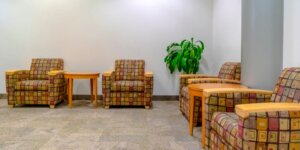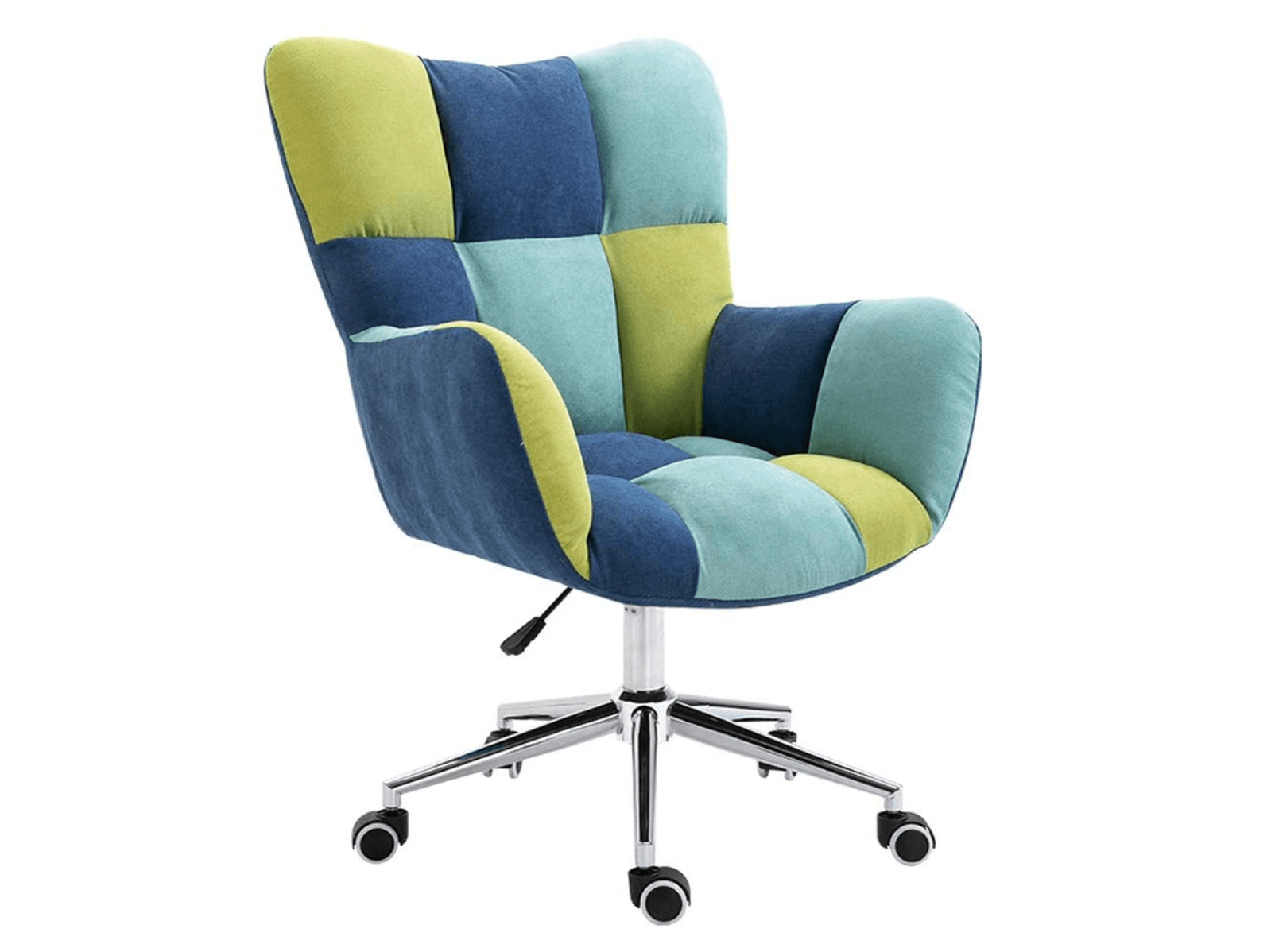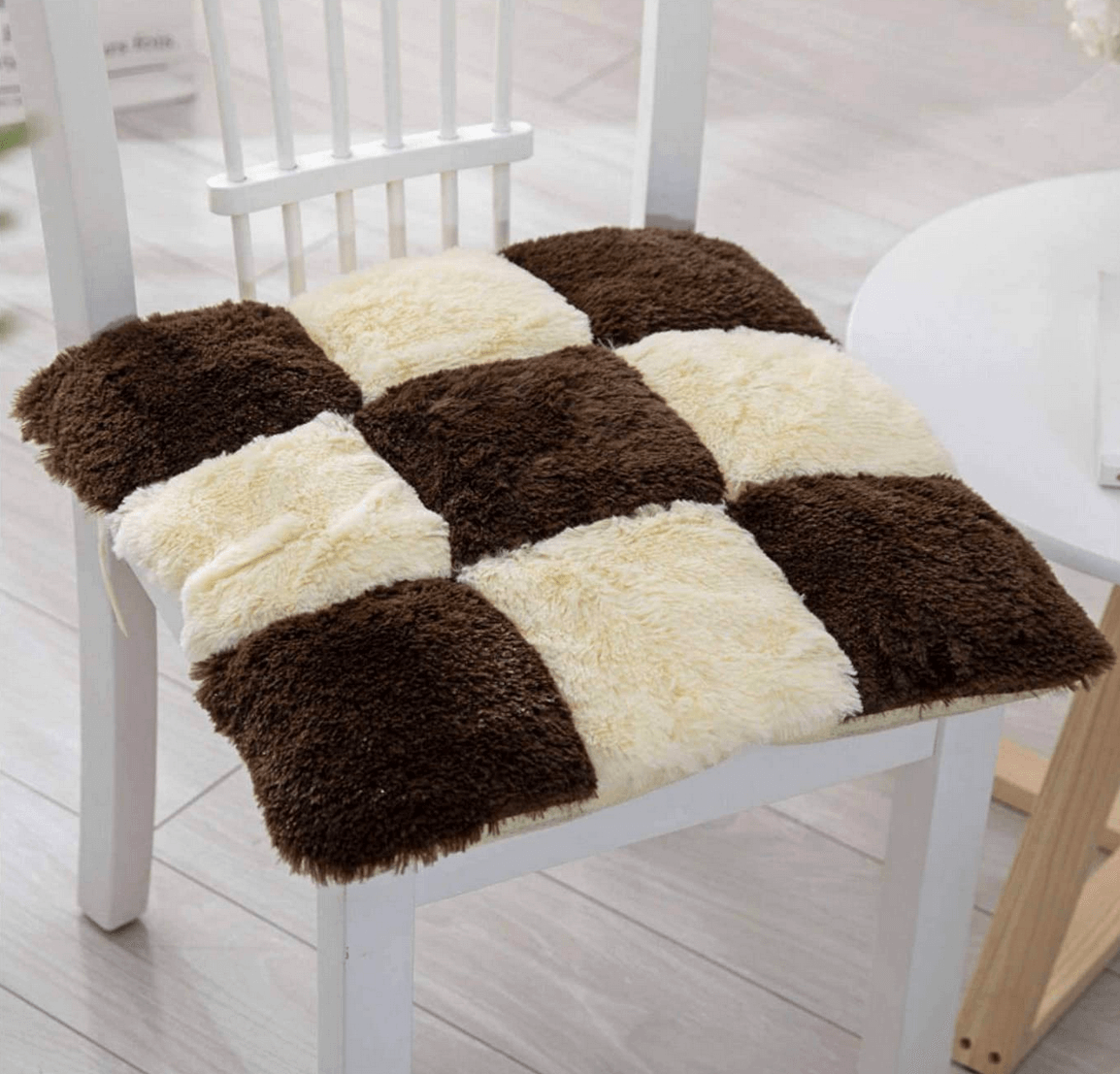Checked Patterns for Chairs

Home decoration should not be limited solely to the choice of a series of resources and their distribution. It’s also interesting to define content through symbols, colors, and shapes. Therefore, we’re going to take a look at what function checkered patterns can fulfill for chairs.
You may have basic, simple, and functional interiors where you use smooth tones or resort to some elementary drawings that end up contributing equally to the aesthetics of the whole and convey meaning.
Today, multiple types of seats can be found on the market. Some are configured in a simple way; others are more sophisticated, and, on the other hand, we find the conventional ones that fit into any interior design.
Checked patterns: What can they provide us?

If you take a look at the very essence of checked patterns, you’ll realize that they’re basically made up of a network of squares that are established among themselves, providing stability, straightness, and firmness.
Generally, we find it on the floor, determined by the alternation of black and white; however, there are also other cases in which different colors are combined or have hydraulic designs, symbols, drawings, geometries, etc.
We find ourselves, therefore, with a symmetrical and rigorous pattern that can come to be present in the chairs themselves. It’s important to remember that it’s not common. For this reason, it can help us to highlight the decoration more, enrich the image of the room, and generate an original visual appeal.
Checkerboarding is a way of organizing a surface.
Checked patterns in chairs: The main characteristics
When pointing out some peculiarities of the checkered pattern arranged on the seats, different sensations come to mind. In this regard, it’ll be each individual, according to their criteria, who draws their own conclusions. Let’s look at some key features:
- The typical black and white checkerboard can be found in armchairs, a large sofa, or, for example, the upholstery of a chair. It produces a subtle, alternate effect that contrasts with other resources that are present.
- The difference that’s established with other prints that we usually have at home is evident. Normally, we opt for plants, figures, or lines. The time has come to change and look for another aesthetic procedure that’s more interesting.
- The appearance of this type of pattern in the home must be constituted in a more subtle way. On the other hand, in bars and public places, it can have a greater presence, as it offers a dynamic, active, and refined appearance.
- It’s not a good idea for a chair of this type to be placed on a floor that also has a checked pattern. This can create a level of saturation that’s not attractive. The most pertinent thing is for there to be a single component with this design and thus offer a different approach.
What styles can it fit in?

It’s true that checked patterns are somewhat unique to be properly combined with traditional or classic styles. Actually, they’re a good bet for the most modern, contemporary, and avant-garde spaces.
On the other hand, they also have a place in styles such as boho chic or Nordic. Both fall in the simple category, so the checkerboard shouldn’t become the focus. In reality, it should be directed toward complementing the rest of the resources.
Undoubtedly, it’s very well linked within city apartments and in urban areas in general; on the contrary, it doesn’t make much sense in rustic or country styles where it can seem somewhat displaced.
It’s important to combine the entire space to achieve harmony.
Other types of checked patterns
On a general level, we can consider black and white checked patterns to be remarkable on their own, but we have other very interesting typologies. One case is hydraulic or multicolor patterns with which a very striking polychrome effect is produced.
In any case, this type of seating will be positioned as a benchmark in the space where it’s located. It can be a point of attraction, as well as having an aesthetic impact. Therefore, we find a very clear meaning: Leadership and a sense of self-identity that stands out above other resources.
Home decoration should not be limited solely to the choice of a series of resources and their distribution. It’s also interesting to define content through symbols, colors, and shapes. Therefore, we’re going to take a look at what function checkered patterns can fulfill for chairs.
You may have basic, simple, and functional interiors where you use smooth tones or resort to some elementary drawings that end up contributing equally to the aesthetics of the whole and convey meaning.
Today, multiple types of seats can be found on the market. Some are configured in a simple way; others are more sophisticated, and, on the other hand, we find the conventional ones that fit into any interior design.
Checked patterns: What can they provide us?

If you take a look at the very essence of checked patterns, you’ll realize that they’re basically made up of a network of squares that are established among themselves, providing stability, straightness, and firmness.
Generally, we find it on the floor, determined by the alternation of black and white; however, there are also other cases in which different colors are combined or have hydraulic designs, symbols, drawings, geometries, etc.
We find ourselves, therefore, with a symmetrical and rigorous pattern that can come to be present in the chairs themselves. It’s important to remember that it’s not common. For this reason, it can help us to highlight the decoration more, enrich the image of the room, and generate an original visual appeal.
Checkerboarding is a way of organizing a surface.
Checked patterns in chairs: The main characteristics
When pointing out some peculiarities of the checkered pattern arranged on the seats, different sensations come to mind. In this regard, it’ll be each individual, according to their criteria, who draws their own conclusions. Let’s look at some key features:
- The typical black and white checkerboard can be found in armchairs, a large sofa, or, for example, the upholstery of a chair. It produces a subtle, alternate effect that contrasts with other resources that are present.
- The difference that’s established with other prints that we usually have at home is evident. Normally, we opt for plants, figures, or lines. The time has come to change and look for another aesthetic procedure that’s more interesting.
- The appearance of this type of pattern in the home must be constituted in a more subtle way. On the other hand, in bars and public places, it can have a greater presence, as it offers a dynamic, active, and refined appearance.
- It’s not a good idea for a chair of this type to be placed on a floor that also has a checked pattern. This can create a level of saturation that’s not attractive. The most pertinent thing is for there to be a single component with this design and thus offer a different approach.
What styles can it fit in?

It’s true that checked patterns are somewhat unique to be properly combined with traditional or classic styles. Actually, they’re a good bet for the most modern, contemporary, and avant-garde spaces.
On the other hand, they also have a place in styles such as boho chic or Nordic. Both fall in the simple category, so the checkerboard shouldn’t become the focus. In reality, it should be directed toward complementing the rest of the resources.
Undoubtedly, it’s very well linked within city apartments and in urban areas in general; on the contrary, it doesn’t make much sense in rustic or country styles where it can seem somewhat displaced.
It’s important to combine the entire space to achieve harmony.
Other types of checked patterns
On a general level, we can consider black and white checked patterns to be remarkable on their own, but we have other very interesting typologies. One case is hydraulic or multicolor patterns with which a very striking polychrome effect is produced.
In any case, this type of seating will be positioned as a benchmark in the space where it’s located. It can be a point of attraction, as well as having an aesthetic impact. Therefore, we find a very clear meaning: Leadership and a sense of self-identity that stands out above other resources.
All cited sources were thoroughly reviewed by our team to ensure their quality, reliability, currency, and validity. The bibliography of this article was considered reliable and of academic or scientific accuracy.
- Ahern, Abigail: Cómo decorar tu piso: trucos para que tu hogar se convierta en la casa de tus sueños, Océano Ambar, 2010.







